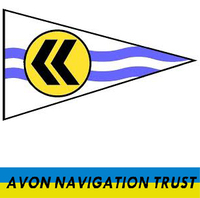Many thanks to
Welford Chase - Avon Estates for facilitating this camera's location and to
Avon Navigation Trust for capitally funding its installation. Binton Bridge South is situated in Welford-on-Avon and serves as a crossing point for Binton Road over the River Avon. Constructed between 1806 and 1809, this bridge stands as a Grade II listed structure characterized by a combination of limestone ashlar and brickwork, featuring five arches. In 1970, a navigable channel was introduced beneath the fifth arch. To ensure structural stability, the bridge is reinforced with pattress plates and iron tie rods adjacent to the navigation arch.The village of Welford-on-Avon is nestled along a meandering bend of the River Avon, specifically on its south bank. Noteworthy features of the village include a maypole, which stands as one of the tallest in England at a height of 65 feet (20 meters). Originally constructed of wood, the maypole was replaced with an aluminum pole following a lightning strike. With three pubs and a multitude of Tudor half-timbered and thatched cottages, the village presents a charming atmosphere, particularly near the village church, which represents the older section of Welford.The River Avon, also referred to as the Warwickshire Avon or Shakespeare's Avon, flows predominantly southwestward through central England, serving as a significant left-bank tributary of the River Severn and holding the distinction of being the easternmost among several rivers sharing the same name within the United Kingdom. Its journey commences in Northamptonshire and traverses or borders the counties of Leicestershire, Northamptonshire, Warwickshire, Worcestershire, and Gloucestershire, primarily in the vicinity of the Cotswold Hills.Notable towns along the course of the River Avon include Rugby, Warwick, Stratford-upon-Avon, Evesham, Pershore, and Tewkesbury, where it eventually converges with the River Severn. Historically, the river has been divided into two sections since 1719: the Lower Avon, below Evesham, and the Upper Avon, spanning from Evesham to above Stratford-upon-Avon.Navigation enhancements first commenced in 1635, resulting in the creation of a series of locks and weirs that facilitated access to Stratford and extended within 4 miles (6 km) of Warwick. However, the Upper Avon, characterized by its challenging and flood-prone nature, was eventually abandoned as a navigable waterway in 1877. Meanwhile, the Lower Avon continued to operate, albeit with difficulties, and by 1945, it remained navigable only below Pershore. Restoration efforts to reinstate the lower river as a navigable route commenced in 1950 and concluded in 1962. The upper river posed a more formidable task due to the absence of many locks and weirs. In 1965, the construction of nine new locks and 17 miles (27 km) of river commenced, predominantly relying on volunteer labor. This ambitious endeavor came to fruition in 1974, with the official opening conducted by Queen Elizabeth the Queen Mother.The Avon is connected to the Stratford-upon-Avon Canal in the heart of Stratford and primarily accommodates leisure craft. Proposals to extend the navigable river and establish a link with the Grand Union Canal at Warwick or Leamington Spa have encountered certain opposition.







